Loom knitting is a versatile and user-friendly craft, perfect for creating scarves, hats, and blankets. It’s ideal for beginners, offering relaxed creativity and accessible learning resources.
1.1 Overview of Loom Knitting and Its Popularity
Loom knitting has gained popularity for its versatility and ease of use, making it accessible to crafters of all skill levels. Unlike traditional needle knitting, loom knitting uses a small, portable tool with pegs to hold yarn, allowing for quick and straightforward project creation. Its popularity stems from its portability, minimal required tools, and the ability to create warm, thick-stitched fabrics. Many crafters appreciate the creative freedom and relaxation it offers, along with the satisfaction of completing projects efficiently. Its growing community and abundant resources further fuel its appeal.
1.2 Benefits of Using a Loom for Knitting
Using a loom for knitting offers numerous benefits, making it a preferred choice for many crafters. It is incredibly beginner-friendly, requiring minimal tools and no prior knitting experience. Loom knitting is portable, allowing projects to be worked on anywhere. The process is efficient, producing warm, thick-stitched fabrics quickly. Additionally, looms help avoid dropped stitches, reducing frustration. This method is ideal for creating scarves, hats, and blankets, making it a versatile and rewarding craft for all skill levels. Its ease and practicality contribute to its growing popularity.
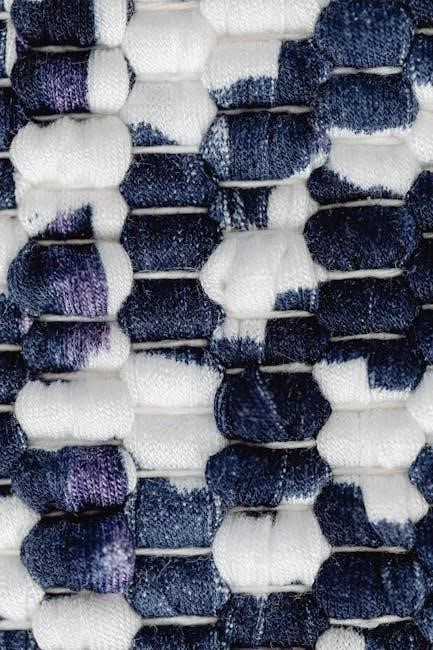
Basic Loom Knitting Stitches
Mastering basic loom knitting stitches is essential for creating versatile projects. These stitches form the foundation for more complex patterns, ensuring a smooth and enjoyable crafting experience.
2.1 The Knit Stitch
The knit stitch is a fundamental technique in loom knitting, creating a smooth, elastic fabric. It involves wrapping yarn around a peg and pulling it through to form a stitch. This stitch is ideal for beginners, as it lays flat and is forgiving. It serves as the building block for more complex patterns, making it essential to master. The knit stitch is versatile and works well for projects like scarves, hats, and blankets, providing a solid foundation for any loom knitting journey.
2.2 The Purl Stitch
The purl stitch is the reverse of the knit stitch, creating a textured fabric with bumps. It adds depth and visual interest to projects, often used alongside the knit stitch for patterns like stockinette. On a loom, the purl stitch is created by wrapping the yarn in the opposite direction. This stitch is essential for creating dynamic designs and enhancing the versatility of your loom knitting projects. Mastering the purl stitch allows for more intricate patterns and professional finishes.
Casting On Methods
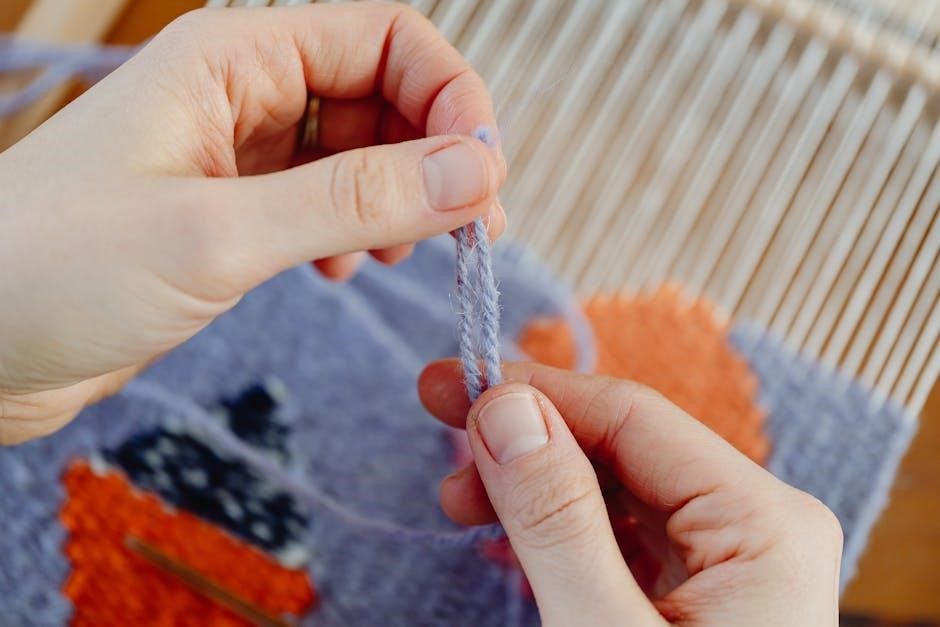
Casting on is the first step in loom knitting, with the e-wrap and chain methods offering flexibility and a clean edge for your projects.
3.1 E-Wrap Cast On Method
The e-wrap cast on method is a popular choice for loom knitting, offering flexibility and live stitches. It involves wrapping yarn around each peg in a figure-eight pattern, creating a clean edge. This method is ideal for projects requiring stretch, such as hats or socks. Beginners find it easy to learn, with step-by-step tutorials available online. The e-wrap ensures a smooth start to your knitting journey, making it a great foundation for various loom knitting patterns.
3.2 Chain Cast On Method
The chain cast on method provides a secure and firm edge, ideal for projects like scarves or blankets. It involves creating a chain of stitches before placing them on the loom pegs. This method is simple to master and works well for beginners. Unlike the e-wrap, it offers less flexibility but ensures a neat and stable starting point. Tutorials and guides online make it easy to follow, making the chain cast on a reliable choice for various knitting projects.
Binding Off Techniques
Binding off securely finishes your project, ensuring stitches remain intact. Techniques like basic or invisible bind off prevent looseness, offering a clean, professional finish to your knitted items.
4.1 Basic Bind Off
The basic bind off is a straightforward technique to secure your knitted fabric. Start by knitting the first stitch, then lift the second stitch over the first, repeating until one stitch remains. This method is quick and effective, ensuring a neat edge. It is essential to maintain even tension to prevent the fabric from becoming too tight or loose. The basic bind off is a fundamental skill for completing any loom knitting project successfully.
4.2 Invisible Bind Off
The invisible bind off creates a seamless edge, ideal for projects like scarves or hats. This method, also known as the “seamless” bind off, involves working stitches in a way that they loop under the previous ones, leaving no visible ridge. It is slightly more complex than the basic bind off but offers a professional finish. Proper tension is crucial to maintain the fabric’s drape and prevent curling. The invisible bind off is a valuable technique for achieving a polished, undetectable edge in your loom knitting projects.

Types of Looms
Looms vary in shape and functionality, with round, straight, and adjustable options available. Each type caters to specific knitting needs, from hats to blankets, ensuring versatility for crafters.
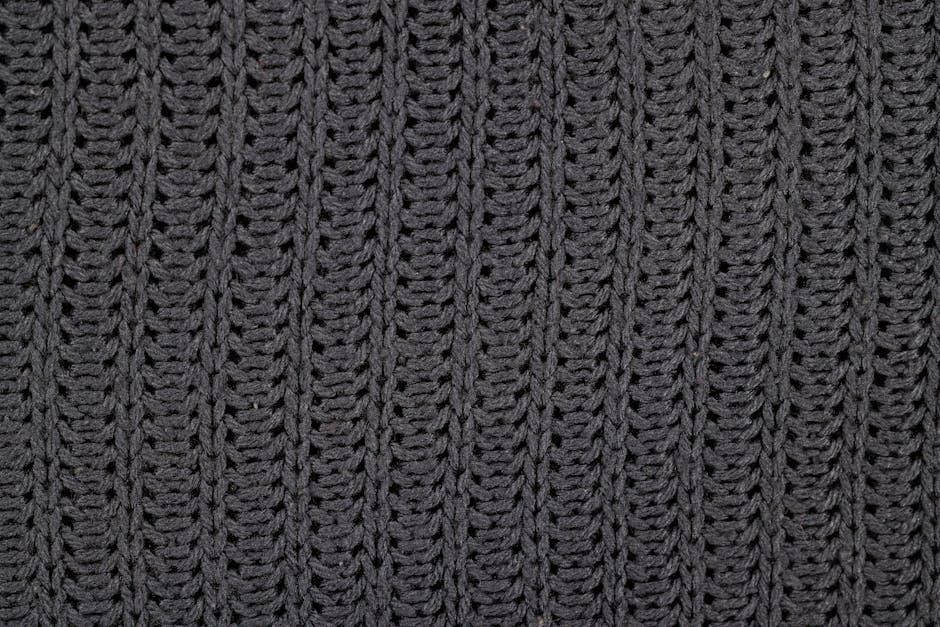
5.1 Round Looms
Round looms are perfect for creating circular or tubular projects like hats, scarves, and socks. They feature pegs arranged in a circular formation, allowing seamless knitting without turning. Ideal for beginners, round looms minimize dropped stitches and simplify the learning process. Available in various sizes and gauges, they cater to diverse yarn weights and project requirements. Their portability makes them a favorite among crafters, enabling easy knitting on the go. Round looms are versatile tools for both novice and experienced knitters alike.
5.2 Straight Looms
Straight looms are ideal for projects requiring flat panels, such as scarves, blankets, or shawls. They feature two parallel rails with pegs, allowing knitters to work back and forth in rows. These looms are great for patterns that require shaping or seaming. Straight looms are also versatile for creating fabric that can be sewn into garments. They are often preferred for their simplicity and ease of use, making them a fantastic choice for both beginners and experienced knitters seeking precision and control in their designs.
5.3 Adjustable Looms
Adjustable looms are highly versatile tools designed to accommodate various knitting projects. They allow knitters to customize the number of pegs and spacing, making them ideal for different yarn weights and stitch patterns. These looms are perfect for creating both small and large items, from baby blankets to intricate garments. Their adaptability makes them suitable for knitters of all skill levels, offering the freedom to experiment with diverse designs and techniques without needing multiple looms.
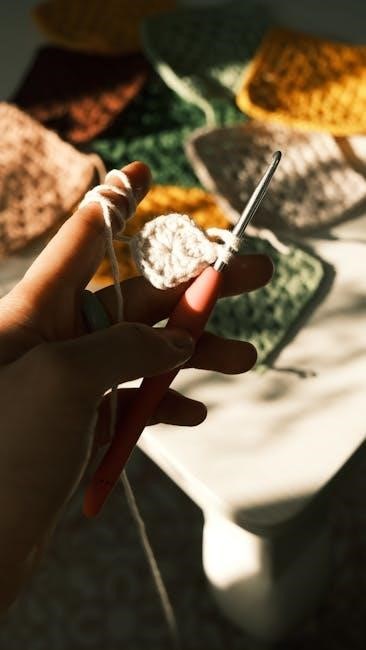
Reading Loom Knitting Patterns
Understanding loom knitting patterns involves mastering terminology, gauge, and tension. Detailed PDF guides and video tutorials provide clear instructions, helping knitters of all levels create beautiful projects effortlessly.
6.1 Understanding Pattern Terminology
Mastering loom knitting starts with understanding its unique terminology. Terms like “cast on,” “knit stitch,” and “gauge” are essential. PDF guides and tutorials break down these concepts, ensuring clarity for beginners. Learning these terms helps in following patterns confidently, whether it’s a simple scarf or a complex design. Clear definitions and visual aids in resources like the How to Loom Knit PDF make learning straightforward and enjoyable, allowing knitters to focus on creativity and precision in their projects.
6.2 Gauge and Tension in Loom Knitting
Gauge and tension are critical in loom knitting to ensure projects fit and look as intended. Gauge measures stitches per inch, while tension affects how tightly yarn is held. Proper gauge ensures fabric lies flat and has the right texture. Measuring gauge regularly helps maintain consistency. Incorrect tension can lead to misshapen garments. PDF guides often include tips for achieving the right tension and gauge, ensuring your loom knitting projects turn out perfectly every time.
Resources for Learning Loom Knitting
Discover free PDF guides, tutorials, and online communities to master loom knitting. Websites like GoodKnitKisses.com offer detailed lessons, patterns, and videos for beginners and advanced crafters alike.
7.1 Free PDF Guides and Tutorials
Free PDF guides and tutorials are excellent resources for mastering loom knitting. Websites like GoodKnitKisses.com offer comprehensive PDF workbooks with detailed instructions, photos, and videos. These guides cover essential skills, from basic stitches to complex patterns, making them perfect for both beginners and experienced knitters; Many PDFs include practice exercises and full patterns to help learners progress confidently. They are easily accessible online, with options to download or print, ensuring convenience for crafters of all levels. These resources are invaluable for improving your loom knitting skills.

7.2 Online Communities and Forums
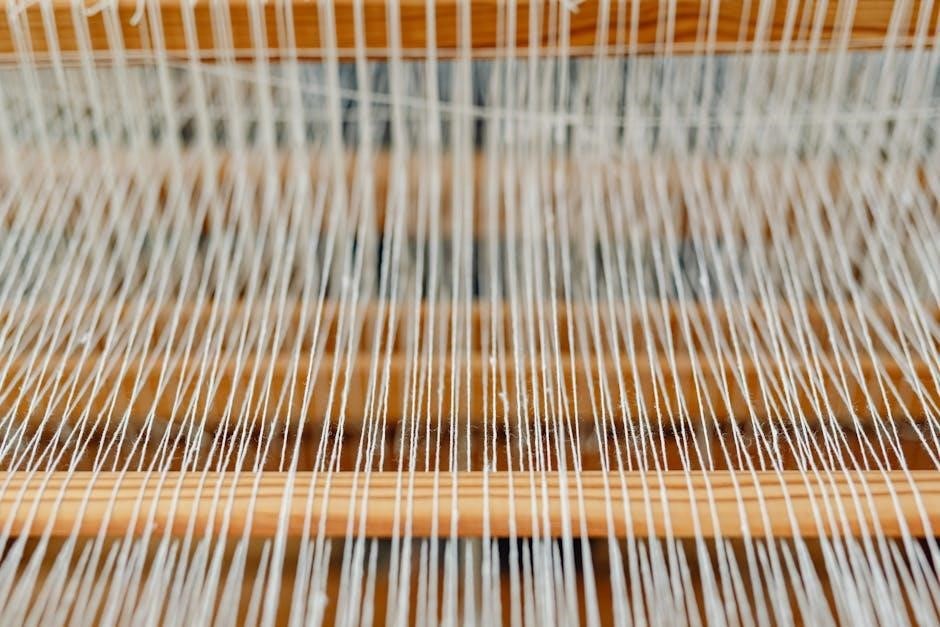
Online communities and forums are vibrant spaces for loom knitters to connect, share ideas, and learn. Platforms like Facebook groups, Ravelry, and specialized forums offer endless support. Members can ask questions, troubleshoot techniques, and showcase projects. These communities are invaluable for staying updated on trends, discovering new patterns, and gaining inspiration. Many forums also host tutorials and live sessions, fostering creativity and collaboration among knitters of all skill levels. Engaging with these groups can enhance your loom knitting journey significantly.
